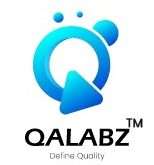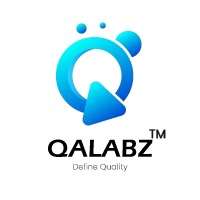
Here are 50 sample manual testing interview questions for freshers:
Q1. What is manual testing?A1. Manual testing is the process of manually testing software for defects without using any automation tools. The purpose is to identify bugs, issues, and defects in the application under test.
Q2. What are the different software testing types?
A2. The different software testing types are functional testing, non-functional testing, structural testing, automation testing, performance testing, etc.
Q3. What is functional testing?
A3. Testing the application or software from the user’s point of view is known as functional testing. Its purpose is to validate that each function of the software application operates in conformance with the requirement specification.
Q4. What is non functional testing?
A4. Testing application’s non-functional requirements such as load, volume, stress testing, security, usability, etc is known as non-functional testing. The purpose is to check the readiness of the system for production usage.
Q5. What is the difference between functional and non functional testing?
A5. Functional testing deals with validating the functional requirements whereas non-functional testing deals with checking non-functional requirements such as performance, security, scalability etc.
Q6. What are the phases of the software testing life cycle?
A6. STLC phases are requirement analysis, test planning, test case development, environment setup, test execution, test cycle closure.
Q7. What is test plan?
A7. The test plan document details the scope, objective, test items, testing framework, test strategy, test deliverables, risks and mitigation for the software testing project.
Q8. What is test scenario?
A8. The sequence of steps to test specified functionalities to verify the expected behavior of system features is defined as a test scenario.
Q9. What are test cases?
A9. Test cases are the set of positive and negative conditions under which a tester will determine whether the application under test satisfies requirements.
Q10. Explain positive and negative test cases with example.
A10. Positive test cases validate that the system works as expected while negative test cases verify that the system breaks gracefully and does not crash in unexpected ways.
Positive Test Case Example - Verify successful login with valid credentials
Negative Test Case Example - Verify system behaves well for invalid password during login
Q11. What is test data?
A11. Test data is the set of input values used to validate the testing results while executing test cases.
Q12. What are the challenges of manual testing?
A12. Manual testing can be time consuming, needs expertise to perform testing accurately, are not reusable or repeatable and can miss defects.
Q13. What can be done to overcome these manual testing challenges?
A13. Automate repetitive tasks, reuse test cases through automation, perform manual and automation testing together.
Q14. What are the best practices for manual testing?
A14. Define clear requirements, map requirements to test cases, follow a structured process, identify test data need, track tests to closure.
Q15. What attributes should a good test case contain?
A15. Test case id, test scenario, steps, test data, pre-requisites, post-conditions, expected result.
Q16. What is test harness?
A16. Test harness is used to execute test scripts to automate testing activities. It has interfaces, parameters, test execution reports, utilities.
Q17. What is defect life cycle?
A17. Defect life cycle contains steps defect logging, defect tracking, defect triage, defect assignments, defect resolving, defect closure and verification.
Q18. Differentiate between defect, error and failure.
A18. Error - mistakes made by the developer while coding. Defect - deviation from requirements discovered during tests. Failure - deviation experienced by end-users during application usage.
Q19. What are the principles of software testing?
A19. Testing shows presence of defects but does not guarantee no defects exist, testing is context dependent, testing should start early, defects cluster together and should be looked for.
Q20. Differentiate between static and dynamic testing.
A20. Static testing does not execute code while dynamic testing executes code and verifies expected vs actual results. Examples - static testing review, inspection. Dynamic testing functional testing, system testing etc.
Hope these sample questions help you prepare for your freshers testing interview! Let me know if you would like me to explain any answer in more detail. I can also provide more sample questions if needed.
Here are 30 more sample manual testing interview questions for freshers:
Q21. What is exploratory testing?
A21. Exploratory testing is an informal testing approach where tester actively controls the design and execution of tests as those tests are created.
Q22. What is confirmation testing?
A22. Testing to confirm or validate fixes, mitigations, workarounds etc applied by developers for reported defects earlier is confirmation testing.
Q23. What is regression testing? Why is it required?
A23. Testing existing software features after modifications are done to ensure no new issues are introduced is called regression testing. It is required so that unintended side effects are not introduced to previously working functions.
Q24. What is sanity testing? When is sanity testing performed?
A24. Sanity testing is cursory testing to determine if basic functionality of software application is working fine after receiving new build. It is typically done before detailed regression testing.
Q25. What is pilot testing?
A25. Testing new application software capabilities before deploying into production conducted by limited set of users is called pilot testing.
Q26. What is the difference between re-testing and regression testing?
A26. Re-testing is testing a defect fix while regression testing is testing unchanged areas after modifications to ensure no new defects introduced.
Q27. What is alpha and beta testing?
A27. Alpha and beta testing are performed by end customer representatives at the developer’s site and customer locations respectively before releasing product to market.
Q28. What are the components of good test report?
A28. Unique id, report summary, environment details, test scope, schedule, results summary, metrics, findings, conclusions etc.
Q29. What metrics are used to measure test effectiveness?
A29. Test case coverage, defect removal efficiency, mean time between failures, escape defect percentage are examples of test measurement metrics.
Q30. How do you proceed if requirements received are not clear?
A30. Discuss with business analyst, development teams to understand purpose and get clarification for unclear requirements before test case design.
Q31. What is test closure?
A31. Test closure or test completion refers to completion of testing activities successfully for a test cycle based on agreed criteria.
Q32. What are test control and test measurement metrics?
A32. Test measurement metrics focus on test effectiveness and efficiency e.g. coverage, escapes while test control metrics monitors milestones e.g. tests executed daily/weekly.
Q33. What is test policy?
A33. Test policy contains rules, roles, responsibility, approach related to software testing for projects developed in the organization.
Q34. What are the components of test strategy?
A34. Test objective, scope, test environments types, entrance/exit criteria, test types executed, risks considerations etc.
Q35. How will you handle an conflict regarding the testability of requirements?
A35. Understand point of views of all stakeholders and come to common consensus based agreement focusing on test coverage and quality.
Q36. What are generic test objectives?
A36. Validate requirements, architecture, design, code and build verification, identify defects and quality requirements measurement.
Q37. How is testing affected by object oriented designs?
A37. Enhanced focus on interaction between objects reduces much repetitive code enabling testing functionality once and reusing vs testing all occurrences.
Q38. Why maintain traceability matrices?
A38. Traceability matrices establish links between test basis through to test cases providing impacted areas need to be tested when changes occur to requirements.
Q39. What is configuration management?
A39. Configuration management manages multiple versions and releases of hardware, software, documentation throughout the software development lifecycle.
Q40. Why software testing should start early?
A40. Finding defects earlier in lifecycle enables faster cheaper repair ensuring they do not propagate downstream leading to issues identification much later.
Q41. Difference between pilot and beta testing?
A41. Pilot limited to user segment while beta testing expands to wider consumer audience both occurring before production release.
Q42. Name some testing design techniques. State advantages and disadvantages of one
A42. Equivalence partitioning, boundary value analysis, decision tables, state transition testing. Advantage for equivalence partitioning divides dataset fewer test cases, disadvantage all combinations not tested.
Q43. What impact changing requirements have on testing?
A43. Changing requirements leads to rework including updating test basis, cases, data, schedule and cost. Traceability matrices should exist to identify impacted areas.
Q44. How do you determine which defect is serious enough to stop testing?
A44. Defects blocking major functionality painful for end users and no temporary workaround exists should have priority leading to stoppage.
Q45. What different reports are produced at different lifecycle phases?
A45. Requirement review report, test planning report, test execution report, defect reports, test completion report, test closure report etc.
Q46. What are different verification and validation techniques?
A46. Reviews, walkthroughs, Inspections, audits, tracing requirements to design to code are verification techniques. Validation technique is actual testing.
Q47. How to handle a conflict amongst your team members regarding who should do what?
A47. Have tasks clearly outlined against each team member role, escalate issue management if problems arise or task reassignment needed.
Q48. What is capability maturity model integration?
A48. Capability maturity model enables organizations benchmark and improve software development process through 6 levels - initial, managed, defined, quantitatively managed and optimizing.
Q49. How you will select what defects to remove in test cycle with time constraints?
A49. Categorize defects based on priority and severity. Eliminate nice to have functionality defects, enhancements. Targets show stopper, functionality and business critical defects.
Q50. Why exploratory testing important and what resources needed?
A50. Identify areas with less documented specifications, subject matter experts should be involved to explore and ensure no critical paths are missed.
Here are 50 sample Automation testing interview questions for freshers:
Q1. What is Automation testing?A1. Automation testing uses tools, scripts and software to automate the testing process by executing repeated tests automatically. It is used to save time and resources.
Q2. What are the benefits of Automation Testing?
A2. Benefits include increased speed, efficiency, accuracy, savings of time and cost, improved test coverage etc.
Q3. What are the different Automation testing tools?
A3. Popular tools include Selenium, QTP (UFT), TestComplete, Ranorex, Silk, SoapUI etc.
Q4. What are the types of Automation Frameworks?
A4. Some frameworks are modular based, library architecture, keyword driven and data driven frameworks.
Q5. What is Selenium? What are the tools it offers?
A5. Selenium is one of the most popular open source test automation tool. Tools offered by Selenium are WebDriver, IDE and Grid.
Q6. Explain what is Selenium WebDriver?
A6. Selenium WebDriver is a web automation framework that provides an interface to write test scripts using multiple languages like Java, C#, Python etc.
Q7. What are the advantages of Selenium WebDriver?
A7. Advantages include open source, support for multiple languages, platform independence, parallel execution support etc.
Q8. What is the difference between Assert and Verify commands?
A8. Both are validation checks. Assert fails at the method level while Verify fails at the checkpoint level.
Q9. What are locators in Selenium?
A9. Locators help find UI elements on the web page. Different locators are id, name, classname, cssSelector, xpath, linkText etc.
Q10. What is XPath in Selenium? Give an example of xpath locator?
A10. XPath is used to find elements on a webpage using XML path syntax. Example xpath locator - //input[@id='email']
Q11. How to handle dynamic elements in web applications using Selenium?
A11. By using relative XPaths that would identify element positions changing in dynamic application.
Q12. How can browser capabilities be handled with Selenium?
A12. By using DesiredCapabilities and setting each browser specific options, we can manipulate browser behavior.
Q13. What are different types of waits available in Selenium?
A13. Selenium provides implicit, explicit and fluent wait commands to handle timing issues.
Q14. When would you use an Implicit wait or Explicit wait?
A14. Use implicit wait during all test execution. Use Explicit wait when need to halt execution for specific duration before condition.
Q15. What is the difference between Implicit and Explicit Waits?
A15. Implicit waits polls DOM for specified duration, explicit waits waits for defined condition to occur before proceeding further.
Q16. What is fluent wait in Selenium?
A16. Fluent wait repeatedly calls the method for checking condition, ignoring exception at each attempt specified frequency.
Q17. What are the different types of Popups?
Q17. Different types of popup's in Selenium are Alert Popup, File Upload Popup, Browser Window Popup.
Q18. How can Alert Popup be handled in Selenium?
A18. Using switchTo().alert() method followed by accepting or dismissing alert.
Q19. How can I upload a file in Selenium Webdriver?
A19. Using sendKeys() command along with appropriate elements can upload a file in application.
Q20. How to handle Browser window popup in Selenium?
A20. Use getWindowHandles() and switchTo() method to handle browser window popup.
Q21. What are Navigation Commands in Selenium?
A21. Commands like navigate().back(), navigate().forward(), navigate().refresh() to navigate to URLs are navigation commands.
Q22. What is data driven framework in Selenium? What are its benefits?
A22. In data driven approach test data is stored in external files and are loaded into automation scripts. This provides reusability of test scripts.
Q23. How can test data be parameterized in Selenium?
A23. Test data can be parameterized in Selenium using parameterization packages like TestNG xml files, apache POI library etc.
Q24. What are the steps to use Selenium Grid?
A24. Steps are - hub establishment, register remote controls, configure test scripts to use remote drives and then execute on grid.
Q25. What do we use Selenium IDE for?
A25. Selenium IDE provides easy test script recording and playback features to get started with test automation.
Q26. What are the advantages of Selenium IDE?
A26. Advantages include easy record and playback, integrated test editor, wizards to create test cases and capability to export scripts into WebDriver.
Q27. How can Selenium integrate with CI tools like Jenkins?
A27. Selenium provides specific plugins and bindings to integrate with CI servers like Jenkins. Configuration enables triggering Selenium scripts.
Q28. Why should Selenium scripts be integrated with CI?
A28. Automated testing needs triggering scripts frequently with multiple data sets, analysis which is achieved by CI integration.
Q29. What are the different types of Reporting in Selenium?
A29. Selenium primarily provides HTML reports for execution. Third party integration also enables usage of extent reports and TestNG reports.
Q30. How can screenshots be captured at run time for failed test cases?
A30. Using captureScreenshot() command along with ITestResult interface failed test cases screenshots can be captured.
Q31. What coding guidelines would you recommend for Selenium test automation?
A31. Code guidelines include page object pattern, synchronization, exception handling, logging, implement design patterns wherever applicable.
Q32. What is Page Object Model? What are its advantages?
A32. Page object model creates object repository for UI elements. Advantages are code reusability and reduced code maintenance.
Q33. How can we parameterize the automation tests?
A33. TestNG xml or property/yml files can be used to feed test data for achieving parameterization.
Q34. What do you know about Jenkins? How would use Jenkins in Selenium automation?
A34. Jenkins is open source CI tool to automate build deploy testing. In Selenium we can trigger regression runs using Jenkins for scheduling.
Q35. What is execution sequence of Selenium automation suite?
A35. Build, trigger from repository, execute based on framework approach, send reports and logs after execution completion.
Q36. Why separate Test Automation code from Application code?
A36. To allow changing test code frequently without impacting application code which needs limited changes generally.
Q37. How can we enhance test execution performance?
A37. We can use Selenium grid, reduce GUI operation overhead by headless browser testing for increasing automation scripts performance.
Q38. What technologies have you worked earlier for test automation?
A38. Earlier worked on Selenium WebDriver, TestNG framework with Java for web application automation testing.
Q39. Which source control systems have been used to maintain your automation suites?
A39. Have used Git and GitHub for maintaining version control of the automation suite and related assets.
Q40. What are the prerequisites to start test automation?
A40. Clarity of features to automate, shortlist right tools, design framework, plan test environments availability etc.
Q41. What are the anti-patterns of automation testing?
A41. Some anti-patterns are just recording and playback, no application independent framework usage, lack of maintenance, compete manual and automation disconnect.
Q42. How will handle an application with intensive Java Scripts?
A42. Will analyze to contain JavaScript execution challenges and appropriately build waits, synchronization within test scripts.
Q43. What is your automation scripting performance improvement approach?
A43. Script optimization, leverage execution from test environments in cloud, distributed testing using Selenium grid for performance.
Q44. How are automation defects logged and tracked?
A44. Automation defects raised in test management tools like Jira, bugzilla which enables complete traceability.
Q45. Explain how you planned automation testing for a new application?
A45. Gather requirements, identify scenarios to automate, estimate test effort, design framework, setup environments followed by scripts development.
Q46. How will you organize automation test scripts for a test suite?
A46. Logical grouping of related tests into test cases, related test cases into test suites categorization helps.
Q47. How to analyze automation test execution report?
A47. Analyze run statistics, performance metrics, capture timings, categorize test failures periodic reviews helps.
Q48. Can you explain automation test driven framework? What are advantages?
A48. Test case scripting starts after composition of test cases in table driven frameworks enabling extensive coverage and reusability.
Q49. What are good principles for an automation framework?
A49. Reusable libraries, external dependency minimization, robustness for runtime errors handling, configurable test data injections.
Q50. What are challenges faced in your recent automation testing assignment?
A50. Challenges can be synchronization with AJAX components, handling too dynamic parameters based validations, lamba based UI integrations.

